
| July 2009 | eNews | Volume 2, Issue 7 |

The Galactic Center and the surrounding Central Molecular Zone comprise the most active star formation region in the Milky Way. Credit: Adam Ginsburg and John Bally (Univ of Colorado - Boulder), Farhad Yusef-Zadeh (Northwestern), Bolocam Galactic Plane Survey team; GLIMPSE II team.
- July 12-18: NAIC-NRAO School on Single-Dish Radio Astronomy
- July 21-23: VLBA Astrometry Workshop
- Aug. 3-14: XXVIIth IAU General Assembly
- Sep. 21-24: Assembly, Gas Content and Star Formation History of Galaxies
- Oct. 29-31: SKA 2009 Science and Engineering Meeting
| The 1.1 mm Bolocam Galactic Plane Survey: The Bolocam Galactic Plane Survey (BGPS) covers 170 square degrees of the northern Galactic Plane at a wavelength of 1.1 mm in the dust continuum. The survey was obtained with the 144 element Bolocam camera on the 10.4 meter diameter radio telescope at the Caltech Submillimeter Observatory... Read more... | 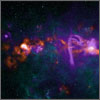 |
| Student Observing Support Awards: The NRAO Student Observing Support (SOS) Committee met in January and May 2009 to discuss the proposals that were submitted during the previous trimesters. The SOS Committee (composed of five faculty members from U.S. universities) discussed the science case and student support application of each proposal. Listed below are those that were selected to receive funding... Read more... | 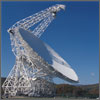 |
| Approved Joint Fermi/NRAO Cycle 2 Proposals: Recognizing that radio observations using the NRAO facilities will be important to the scientific exploration by the Fermi Gamma-ray Space Telescope, up to 10% of the total observing time on each NRAO telescope was made available for joint observing... Read more... |  |
| ALMA Construction: Interferometry at the Operations Support Facility (OSF) with the first two antennas on their 69.7m baseline continued under the guidance of Joint ALMA Office (JAO) personnel after the first dynamic fringes were obtained. Fringes were demonstrated at 1.3mm during the period as instrumental and software tests continued... Read more... | 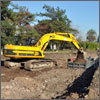 |
| CASA Update: The Common Astronomy Software Applications (CASA) package being developed by NRAO and ALMA will be used for offline reduction and analysis of both ALMA and EVLA data. CASA is fully scriptable and offers a growing suite of data reduction tasks written in C++ with a Python interface, plotting through matplotlib, and a Qt-based Viewer and new experimental plotter (plotms, see Figure 1)... Read more... | 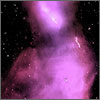 |
| Binary Black Hole Surprises: Binary black hole systems with subparsec scales are predicted in merging scenarios for galaxy evolution and also factor prominently in predictions for the gravitational wave background. But do such binary systems exist? Twitter has been atwitter over the past few months following the astro-ph announcement in January that such a system may have been found by Boroson & Lauer [1]... Read more... | 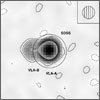 |
| Happy Birthday AIPS: The AIPS software package turned 30 years old on July 1, 2009. It is still going strong, although with modest manpower. The semi-annual progress report for the 31DEC09 release is available at: ftp://ftp.aoc.nrao.edu/pub/software/aips/TEXT/PUBL/LET09A.PDF... Read more... |
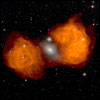 |
| NRAO Archives Announces New Web Resource: The NRAO Archives is pleased to announce a new Internet resource, Early Radio Astronomy Courses, which currently includes lecture notes for courses taught by Hendrik C. van de Hulst (1918-2000) and by Kevin C. Westfold (1921-2001)... Read more... |  |
|
Subscribe | Unsubscribe
